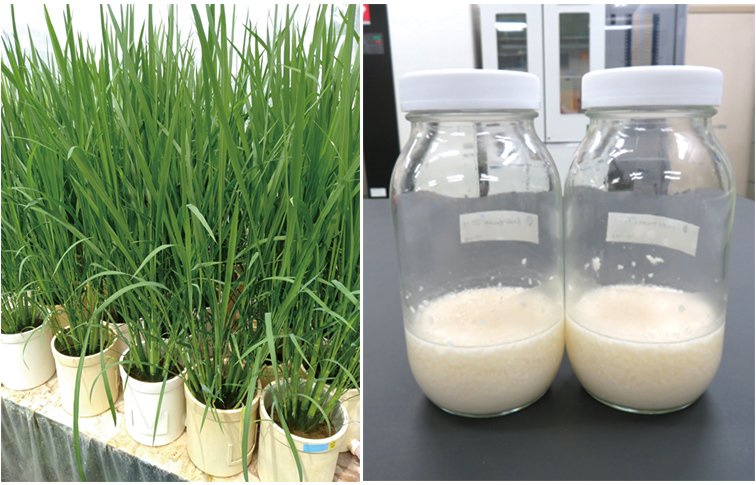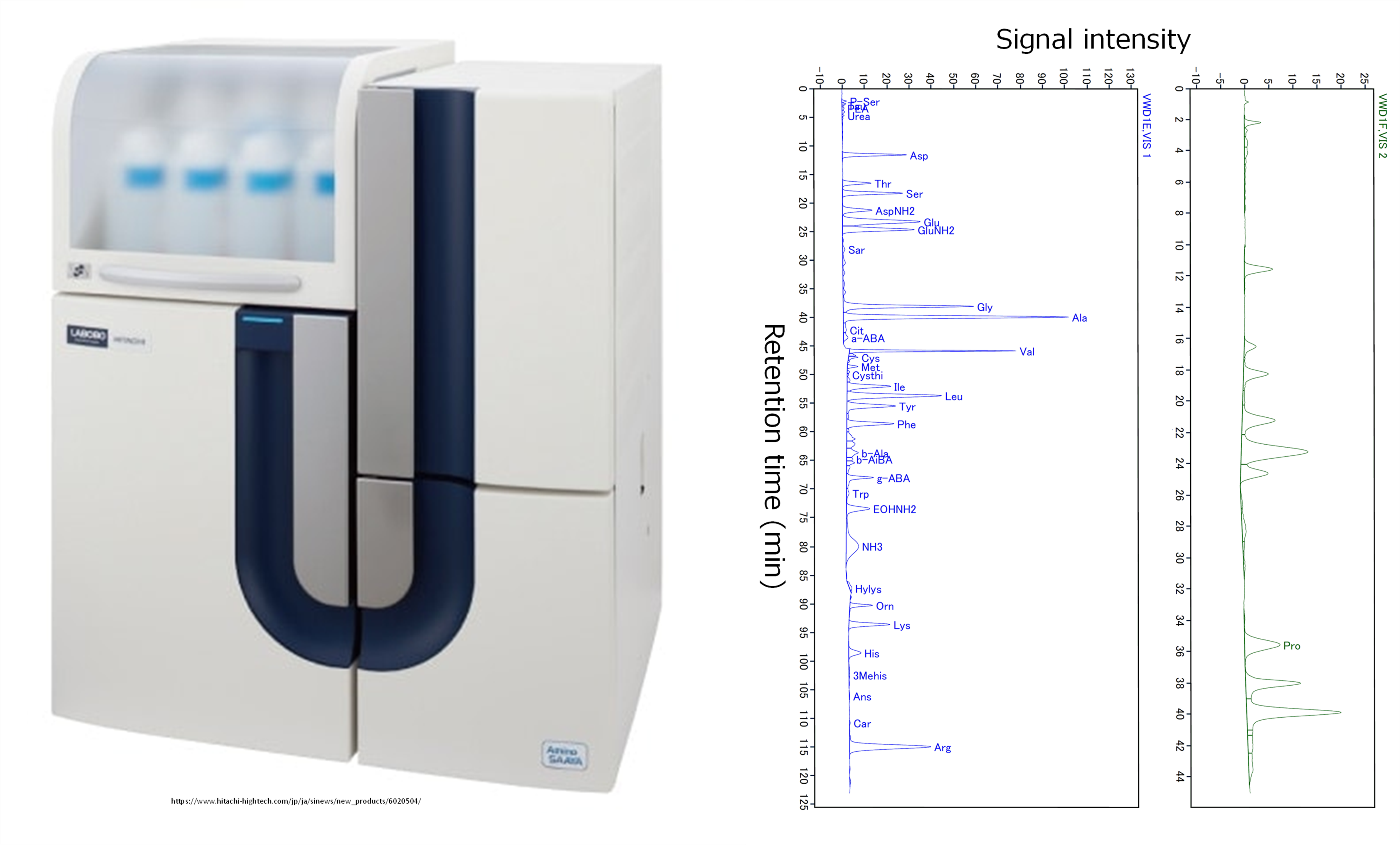Research on the relationship between rice production and sake making
【Summary】
It is known that proper management of paddy fields contributes to the improved yield and quality of rice grains. In particular, differences in the amount and timing of fertilizer application affect the 1,000-grain weight, quality in appearance, and protein content of rice grains, all of which are important for the raw material of sake. However, the relationship between such differences in rice cultivation and the fermentation properties and taste of sake is not well understood. In this study, to obtain new insights into the relationship, we combined rice cultivation test and small-scale sake brewing test.
 Fig. 1 Rice cultivation and sake fermentation tests. Rice pot cultivation under varying fertilization
Fig. 1 Rice cultivation and sake fermentation tests. Rice pot cultivation under varying fertilization
conditions (left) followed by small-scale sake brewing using the rice grains (right) is conducted.
 Fig. 2 Sake quality analysis. For example, amino acids and related compounds in sake are quantified
Fig. 2 Sake quality analysis. For example, amino acids and related compounds in sake are quantified
by using the amino acid analyzer (left). A chromatogram of amino acid and related compound peaks is shown (right).
【Research leader】
| Specially Appointed Assistant Professor, Sakeology Center | MIYAMOTO Takuji |
|---|
【Member】
| Specially Appointed Assistant Professor, Sakeology Center | NISHIDA Ikuhisa |
|---|---|
| Cooperating Faculty Member, Sakeology Center / Professor, Faculty of Agriculture | OHTAKE Norikuni |
| Vice Director, Sakeology Center / Professor, Faculty of Agriculture | HIRATA Dai |
【Main Publications List】
| Takuji Miyamoto, Ikuhisa Nishida, Norikuni Ohtake, Dai Hirata: Nitrogen fertilization of rice plants before flowering affects sake fermentation and quality. Cereal Chemistry 100 (2), (2023) 277–283. |
| Takuji Miyamoto, Ikuhisa Nishida, Norikuni Ohtake, Dai Hirata: Impacts of nitrogen fertilizer to rice plants on sake brewing. Agricultural biotechnology 8 (4), (2024) 43-45 (in Japanese) |

